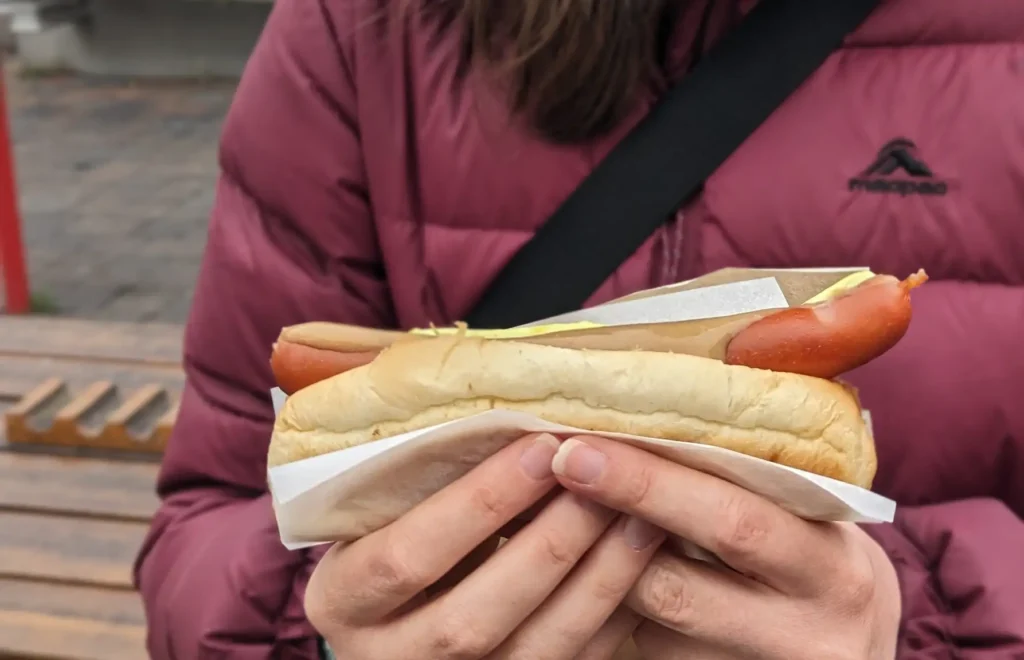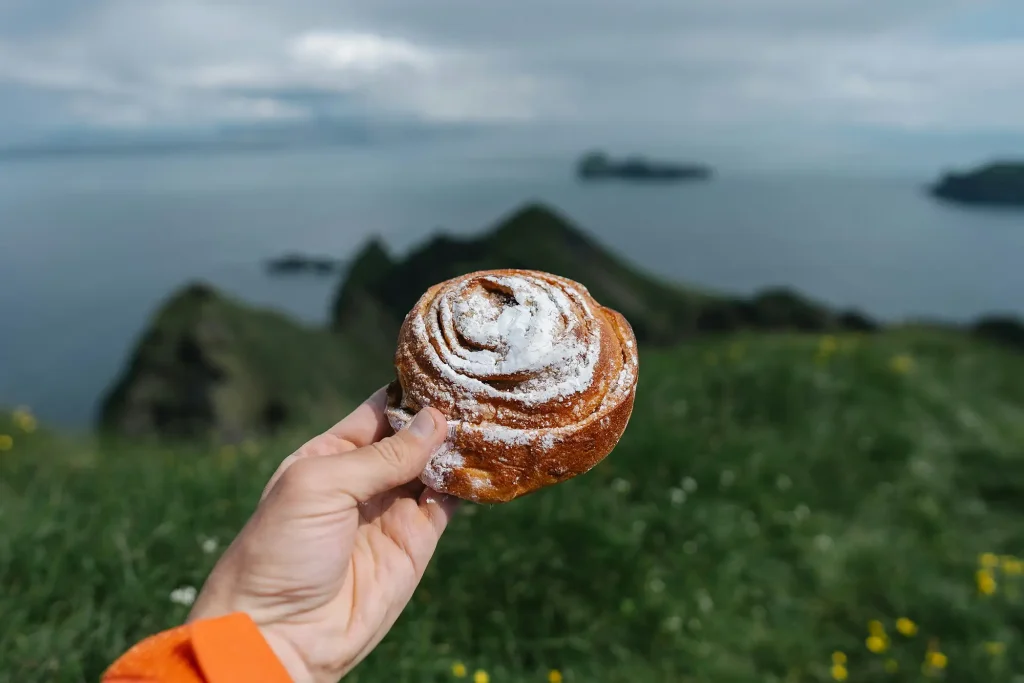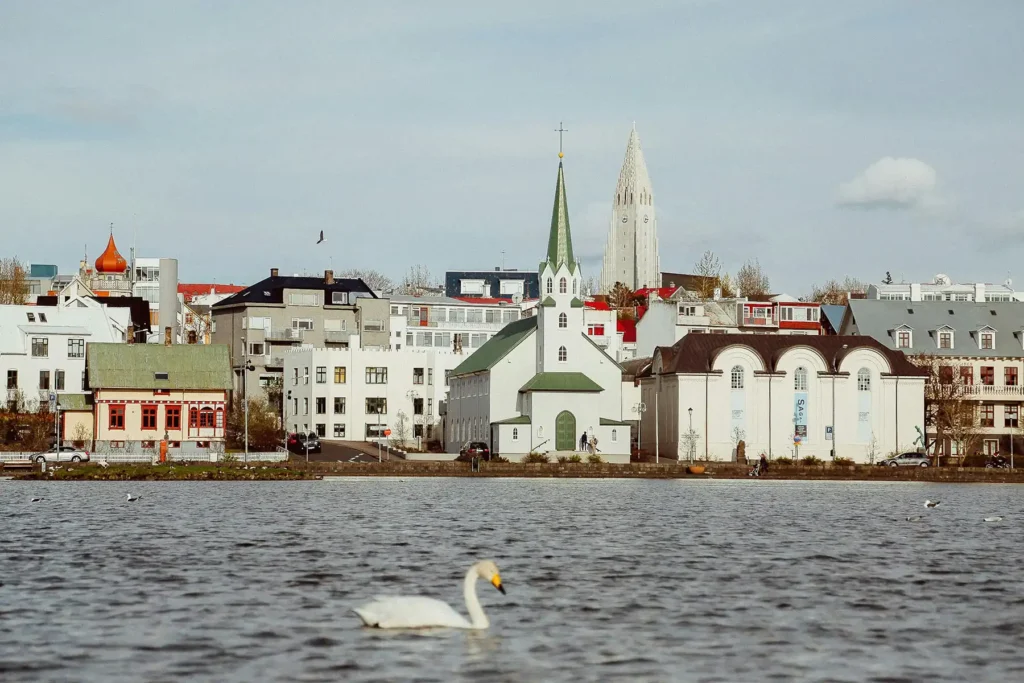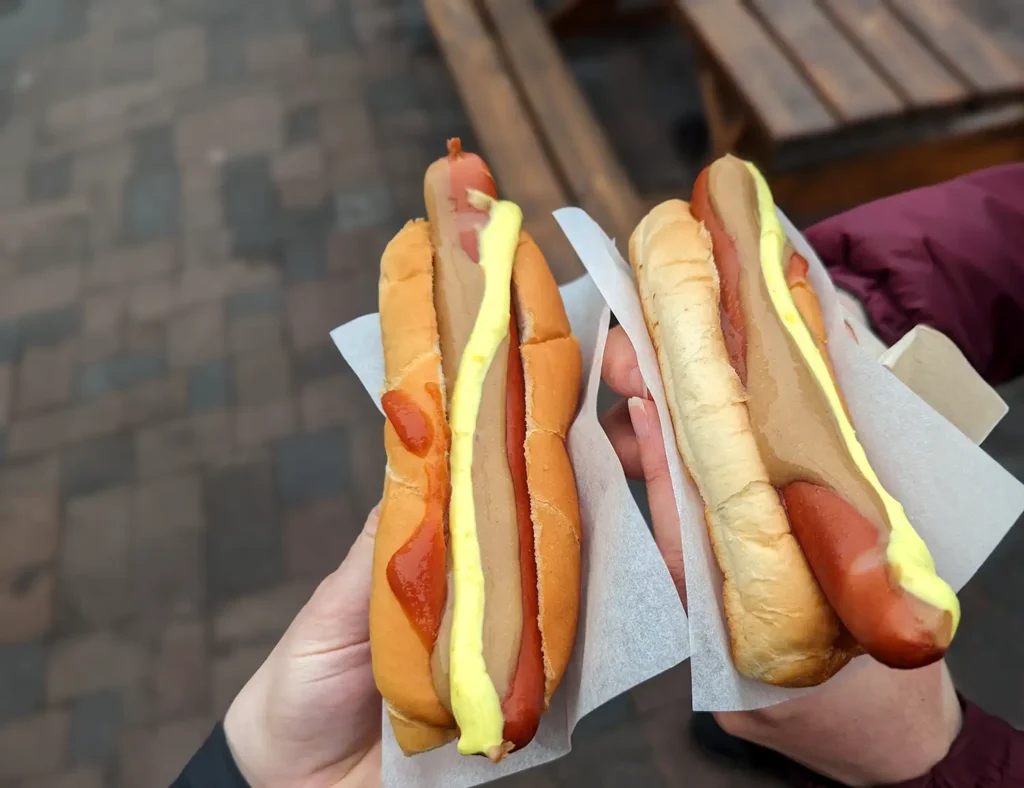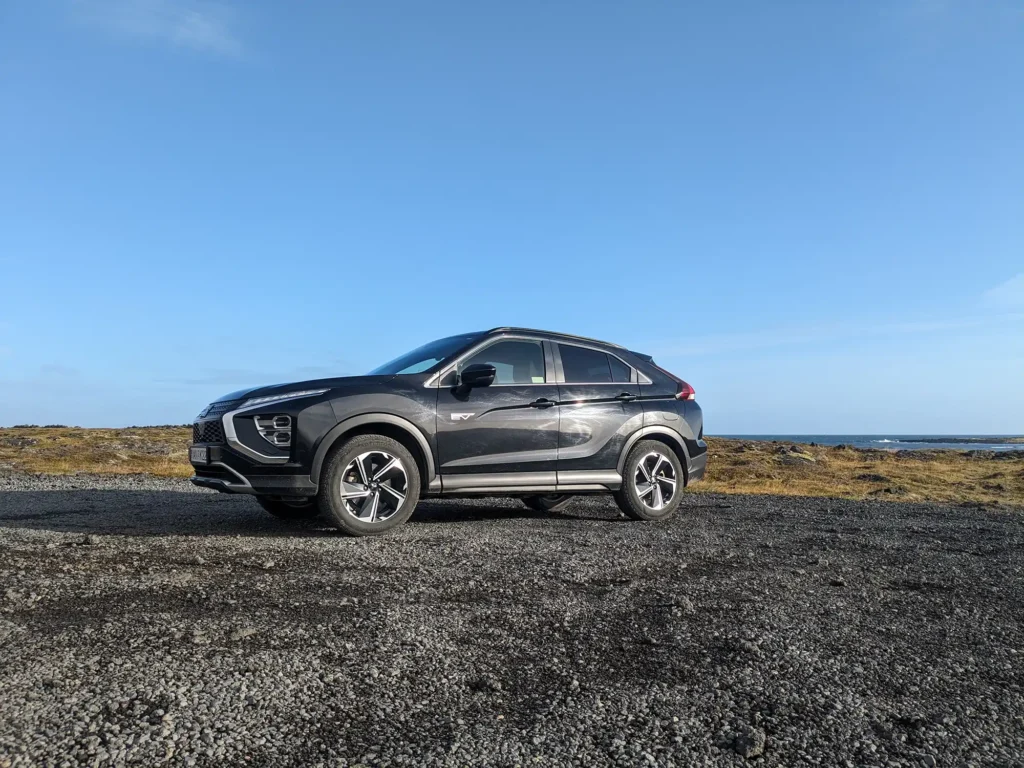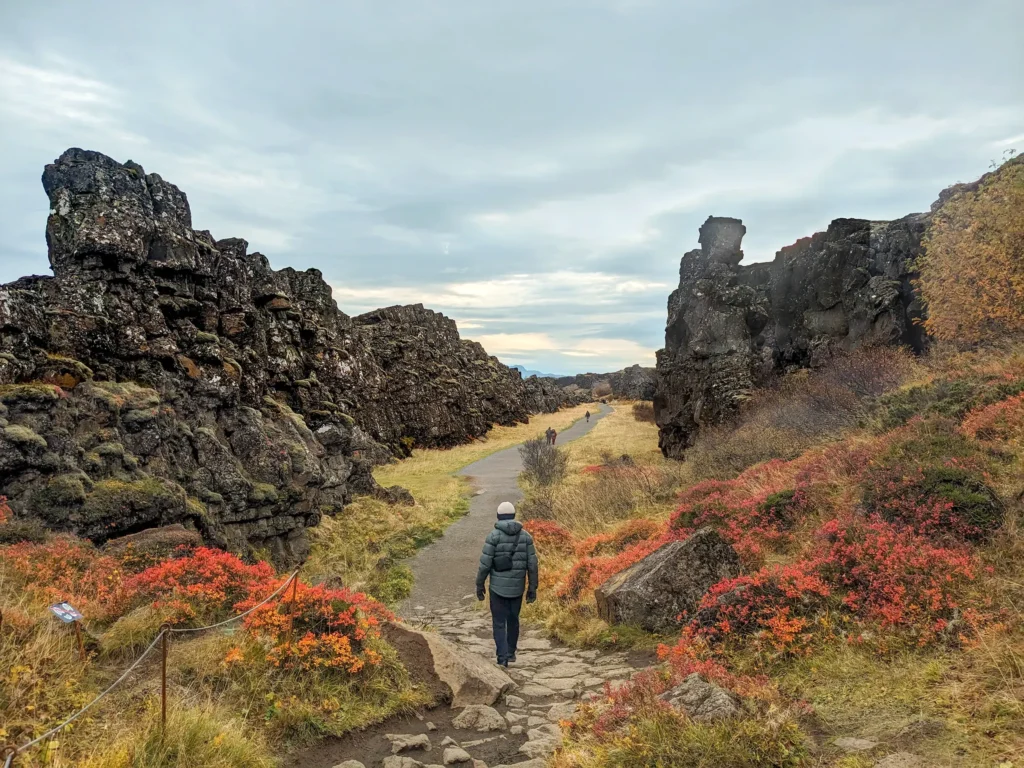Why is food so expensive in Iceland?
Iceland’s high food prices come down to a few main factors.
Isolation: Iceland’s location means that importing goods is expensive and time consuming.
Climate: The harsh weather makes growing any local produce a difficult and expensive process.
Wages: In line with Iceland’s cost of living the wages are also quite high (catering and restaurant minimum monthly wage: 435.250 ISK) so these costs contribute to the prices on the menus.
How much we spent on food in Iceland
To give you a clear picture, here’s a breakdown of what we spent on food for two people during our 9-day trip:
Groceries
- Bónus: 7,864 ISK ($57 USD, £45 GBP, $88 AUD)
- Krónan: 4,475 ISK ($32 USD, £26 GBP, $50 AUD)
Eating Out
- Meal at Friðheimar: 7,790 ISK ($57 USD, £45 GBP, $87 AUD)
- Costco (hot dogs from food court): 598 ISK ($4 USD, £3 GBP, $7 AUD)
- Fish and Chips, Lamb stew from 101 Reykjavik Street Food: 4,900 ISK ($36 USD, £28 GBP, $55 AUD)
- Hot dogs from Bæjarins Beztu: 1,380 ISK ($10 USD, £8 GBP, $15 AUD)
- Ice cream from Valdís: 1,100 ISK ($8 USD, £6 GBP, $12 AUD)
- Bakery treats: 800 ISK ($6 USD, £5 GBP, $9 AUD)
Total Spent for 2 people: 27,907 ISK ($200 USD, £156 GBP, $313 AUD)
Total per person: 13,954 ISK ($100 USD, £78 GBP, $157 AUD)
During our trip, we visited the grocery store five times. Our first stop was a big haul at Bónus, where we stocked up on essentials. After that, we made a few quick stops at Krónan and Bónus for cold items and snacks (including one last Skyr before we flew out).
When it came to eating out, the highlight was definitely Friðheimar Tomato Farm in the Golden Circle. We chose the more affordable soup buffet and the meal was amazing. You get unlimited tomato soup (still the best I’ve ever had) and freshly baked bread, all while sitting in a cozy greenhouse.
Second place was the ice cream we got from Valdís – it was the priciest ice cream cone I’ve ever had, but worth every krona. If you go, I highly recommend trying the rye bread flavour.
My best tips to save money on food in Iceland
1. Start with smart accommodation choices
The best way to minimise eating out is to choose accommodations with kitchen facilities. While these options may cost a bit more upfront, the savings from being able to cook your own meals will add up quickly.
Iceland has plenty of self-catering options, including guesthouses, cabins, and hostels (the most budget-friendly choice if you’re traveling solo). Nearly everywhere we stayed had some form of kitchen, with many fully equipped with a stove and fridge, giving you plenty of options for the different meals you can prepare.
Airbnb is a great place to find these types of accommodations, but you can also use the ‘kitchen’ filter on Booking.com. Just be sure to check the reviews to confirm how well-equipped the kitchen is.
If you’re curious about where my partner and I stayed, I’ve listed all our accommodations here.
2. Stick to Iceland’s budget supermarkets
Supermarkets are your best friend, especially the budget-friendly ones like Bónus and Krónan. Both stock fresh produce, snacks, and pantry essentials, with Bónus having slightly lower prices and Krónan offering a wider selection.
The downside is that these supermarkets are only found in larger towns, so I recommend stocking up before heading to Iceland’s more remote areas.
We were actually pleasantly surprised by some of the prices at the budget supermarkets. While certain items are shockingly expensive, others are reasonably priced and comparable to other countries.
Tip: In Iceland, shopping bags aren’t free, so bring your own reusable ones to save money. That said, I couldn’t resist buying a classic Bónus bag as a souvenir!
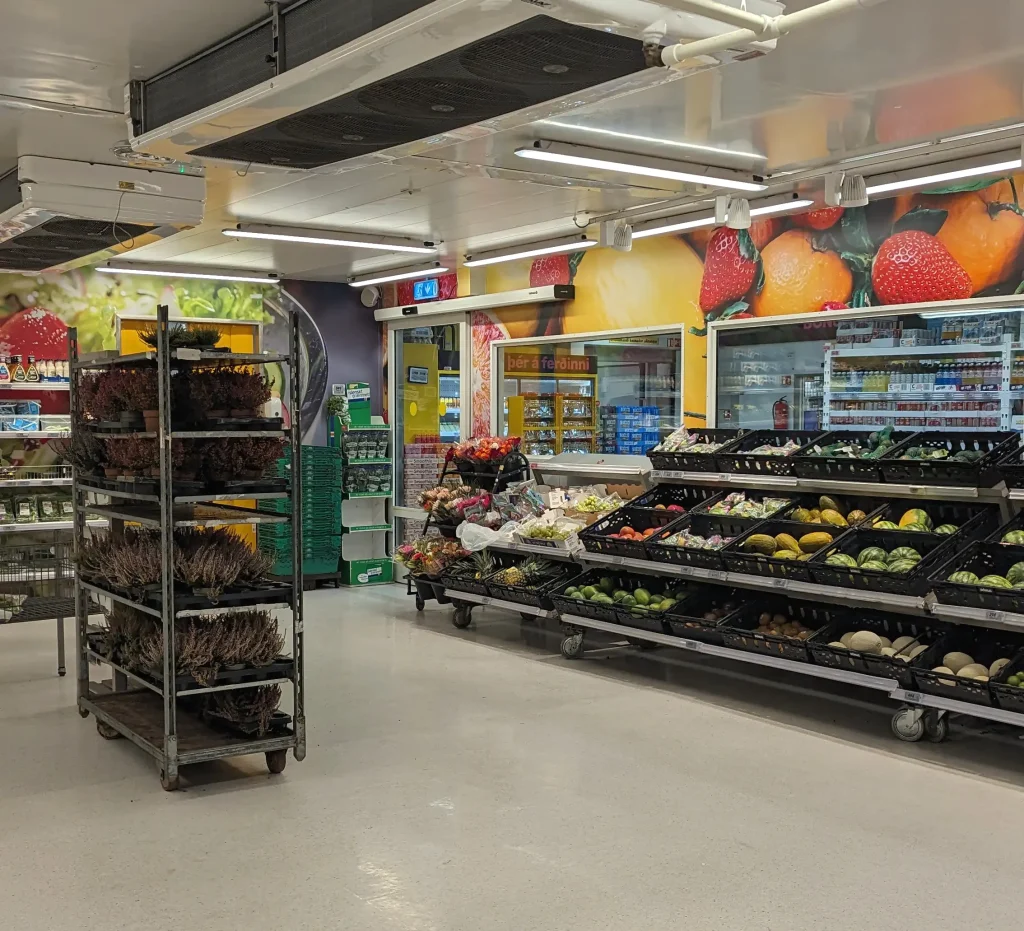
Rough guide to supermarket costs – Grocery prices at Kronan as of August 2025
Snacks
| Bag of Popcorn | 279 ISK |
| Tortilla chips | 299 ISK |
| Salsa | 299 ISK |
| Prince Polo (chocolate bar) | 109 ISK |
Breakfast Essentials
| Carton of 10 eggs | 675 ISK |
| Loaf of sandwich bread | 415 ISK |
| Oatmeal (1kg) | 230 ISK |
| Milk (1L) | 225 ISK |
| Single-serve tub of Skyr | 278 ISK |
| Jar of jam | 260 ISK |
| Peanut butter | 459 ISK |
Fruit & Veg
| Bananas (1kg) | 330 ISK |
| Strawberries (500g) | 998 ISK |
| Blueberries (500g) | 1,099 ISK |
| Tomatoes (1kg) | 513 ISK |
| Potatoes (1kg) | 372 ISK |
| Onions (1kg) | 199 ISK |
Lunch or Dinner Staples
| Pasta sauce | 275 ISK |
| Dried spaghetti (1kg) | 299 ISK |
| Rice bags (boil in bag, 4 portions) | 190 ISK |
| Indian curry sauce | 370 ISK |
| Stir-fry sauce | 259 ISK |
| Instant noodles | 139 ISK |
| Frozen Thai curry | 495 ISK |
| Frozen pizza | 599 ISK |
Meats
| Beef mince (500g) | 1,639 ISK |
| Chicken breast (1kg) | 2,429 ISK |
| Smoked salmon (100g) | 869 ISK |
| Basic hotdog sausages (10) | 480 ISK |
| Firm tofu (400g) | 370 ISK |
3. Make meal plans
While it’s tempting to decide on meals as you go, planning ahead can save both time and money. Avoiding overpriced rest stops and tourist traps is easier when you have lunch and snacks ready or a plan to pick up food from a grocery store. Stocking up for a few days at a time also means fewer supermarket runs (something we’re definitely guilty of) and more time spent exploring Iceland.
What Our Meals Looked Like
Breakfast: Eggs on toast, oatmeal with bananas, or Skyr.
Lunch: Sandwiches and snacks like popcorn or fruit (we’d prepare these in the morning while making breakfast).
Dinner: Simple but hearty meals – One night, we made spaghetti with jarred tomato sauce, potatoes, and kidney beans. Another night, we cooked a curry with potatoes and hot dog sausages, served with rice.
If we stayed in one place for multiple nights, we’d cook a big meal the first night and enjoy leftovers the next day. This not only saved money (since ingredients often come in larger portions anyway) but also meant we had a meal ready to just heat up after a long day.
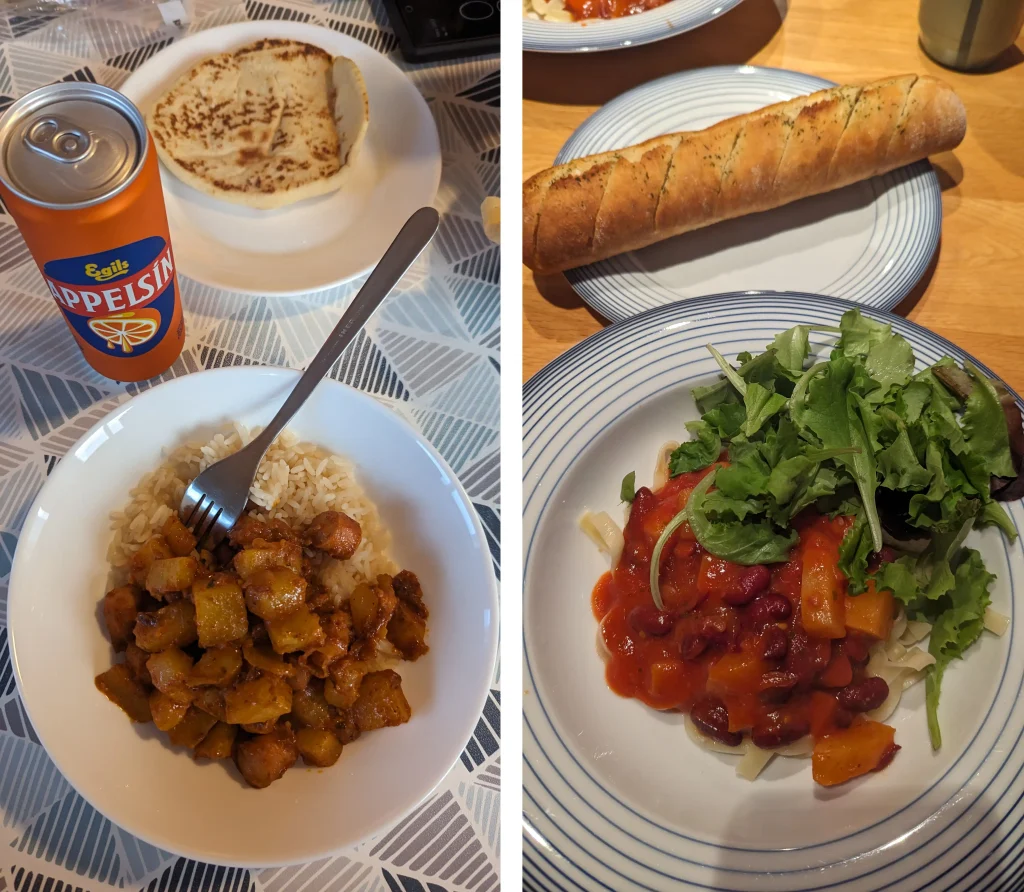
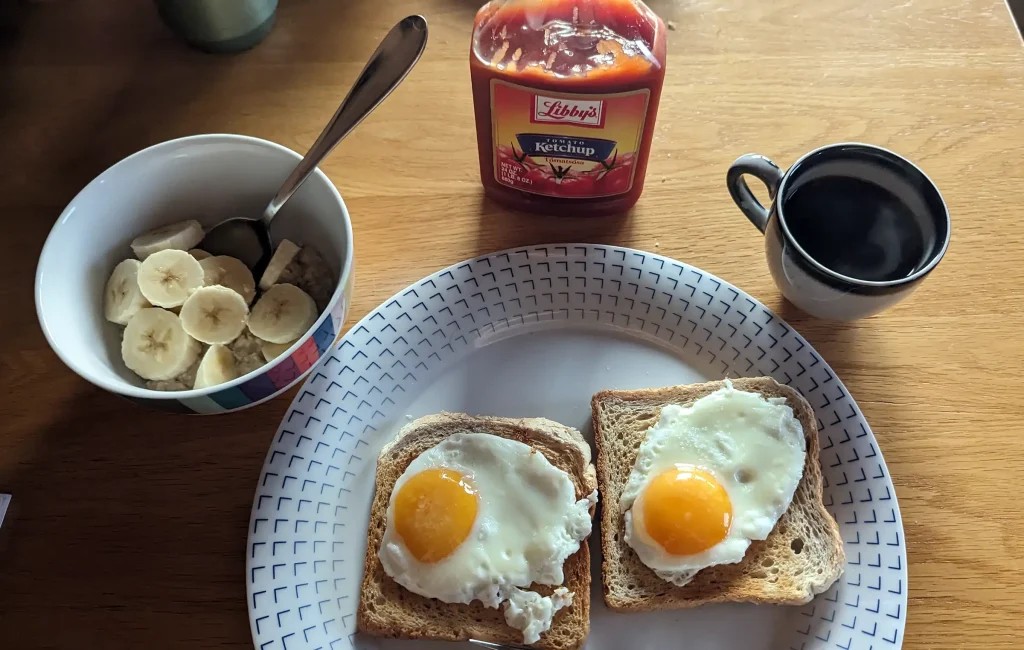
4. Skip the bottled water
One of the easiest ways to save money in Iceland is by skipping bottled water. Iceland’s tap water is among the purest and best-tasting in the world. Simply bring a reusable water bottle and refill it as you go – at your accommodation, restaurants, or drinking fountain.
In some regions, hot water is geothermal and may have a sulphuric, egg-like smell. While it’s safe to drink, you might prefer boiling the kettle if you want hot water. The cold water, however, comes from a separate source and is always fresh and clean, perfect for drinking straight from the tap.
5. Pack supplies from home
Bringing a few essentials from home can also help you save money.
Some things to consider bringing:
- Spices and seasonings (expect to pay around 519 ISK for a small jar of paprika)
- Instant coffee, tea bags
- Cooking oil spray
- Ramen, instant oatmeal
- Granola bars
- Crackers or rice cakes
Non food items to also pack that will come in handy:
- Ziplock bags – these are great for snacks and leftovers
- A reusable cutlery set (like this set that’s light and super compact)
- A reusable compact container
- A collapsible cooler (for keeping Skyr, milk, or sandwich ingredients cold after grocery shopping)
- Rubber bands to reseal opened packets (we ended up using some of my spare hair ties for this).
What You Can’t Bring:
It’s important to note that Iceland has strict rules against importing raw meat, dairy, and certain fresh foods, so skip these and buy them once you arrive. There’s also a duty-free food limit of 10 kg, so pack wisely and don’t go overboard. You can learn more about these import rules on Iceland’s Revenue and Customs website.
6. Avoid alcohol
Alcohol in Iceland is expensive thanks to their high taxes, so it’s worth cutting back or skipping it altogether. During our trip, we only had one drink – a tomato beer at Friðheimar (we couldn’t resist trying it!)
If you’re buying alcohol at a restaurant or from Vinbúðin (Iceland’s only liquor store), expect prices to be higher than in most other European countries. For example, a bottle of red wine starts at around 1,770 ISK. This means that if you’re trying to say within a budget skipping alcohol is another of the easiest ways to save.
7. Let yourself splurge occasionally
Sticking to a budget is important, but so is experiencing Iceland’s cuisine. Plan some meals into your itinerary that will allow you experience some of the best food Iceland has to offer. For us, this was tomato soup at Friðheimar, a hot dogs from Bæjarins Beztu, and fish and chips at 101 Reykjavík Street Food.
You’re on holiday after all, so don’t forget to treat yourself. Mixing supermarket meals with the occasional meal out creates the perfect balance without the guilt of overspending.
